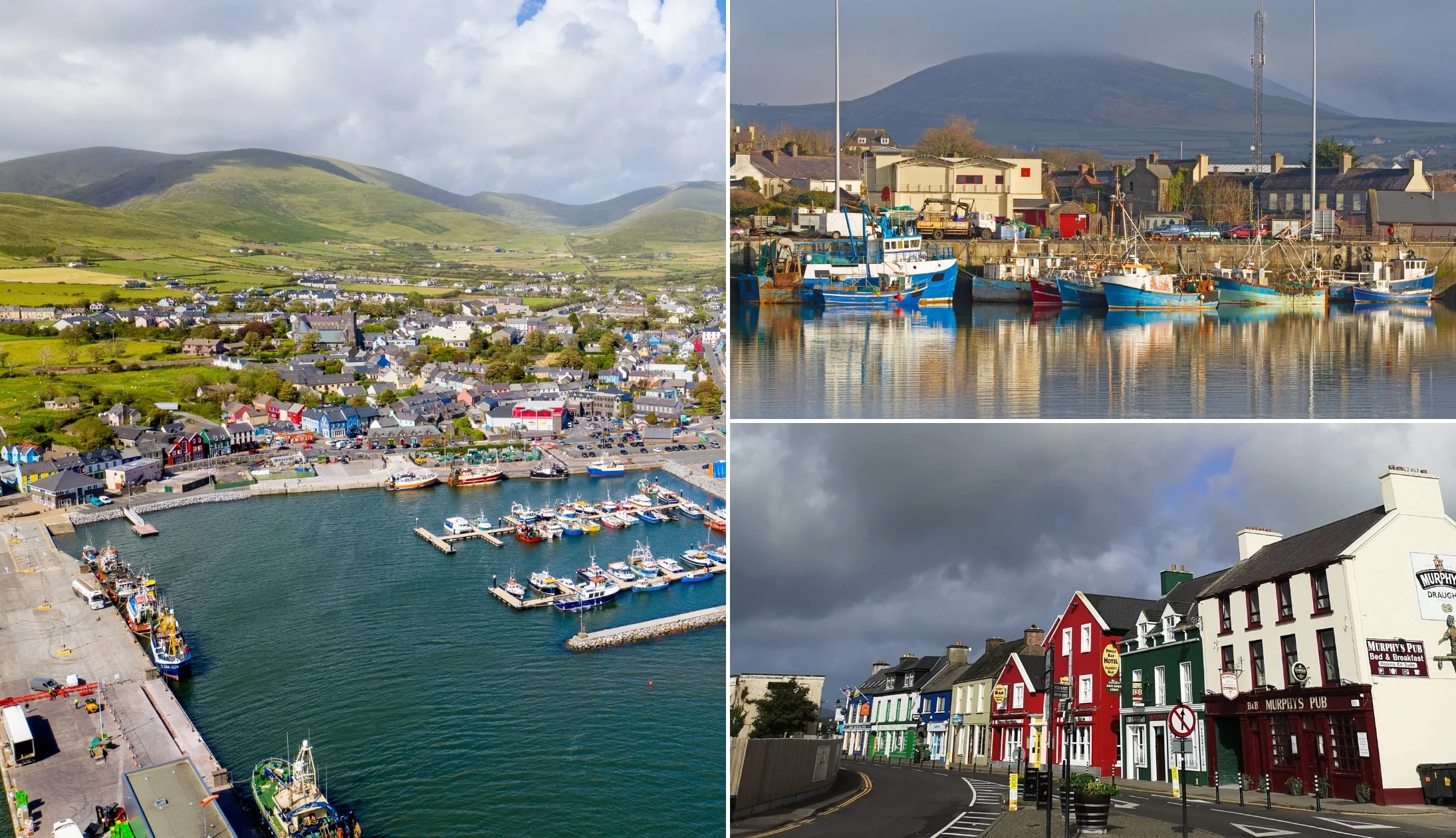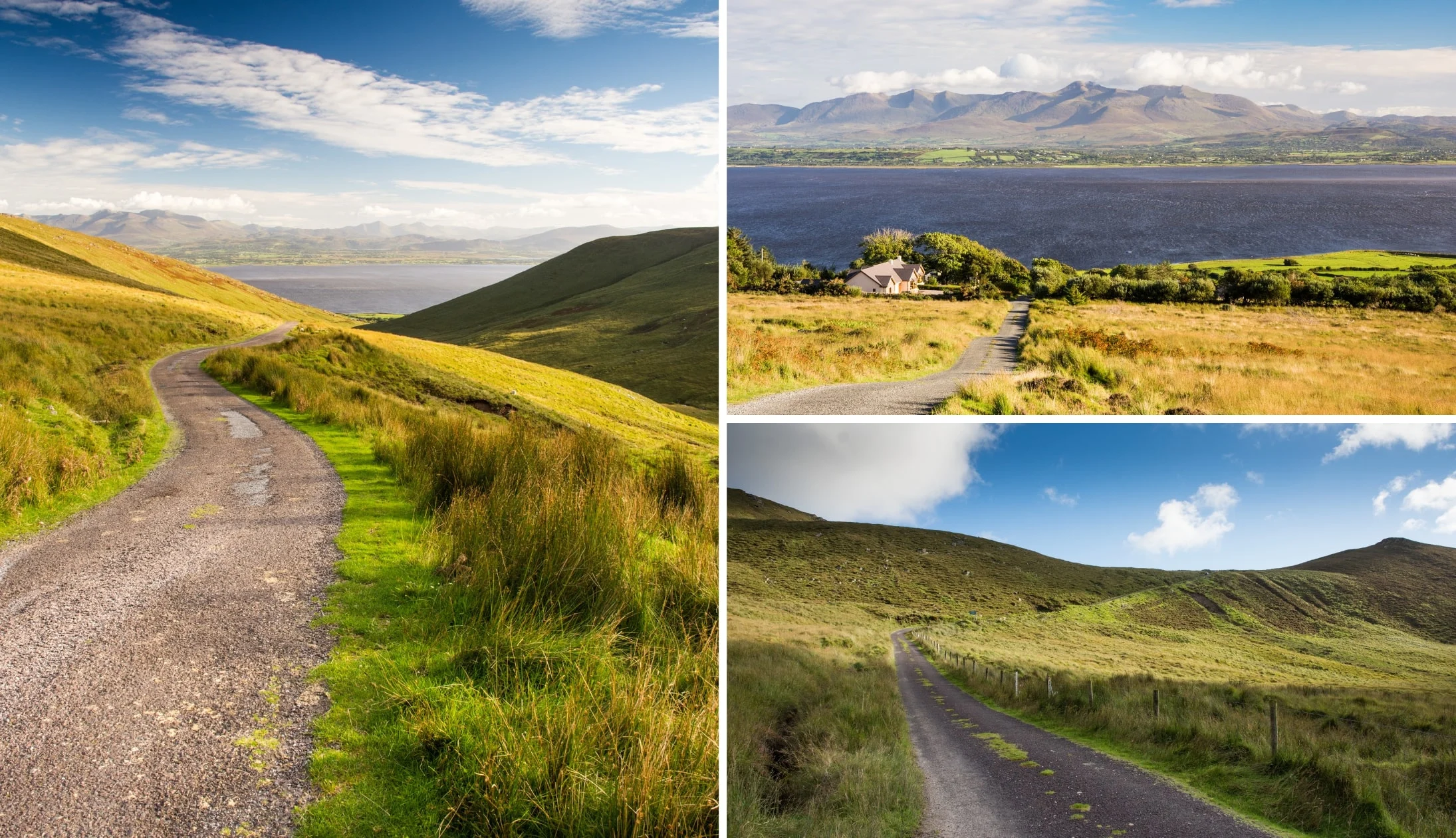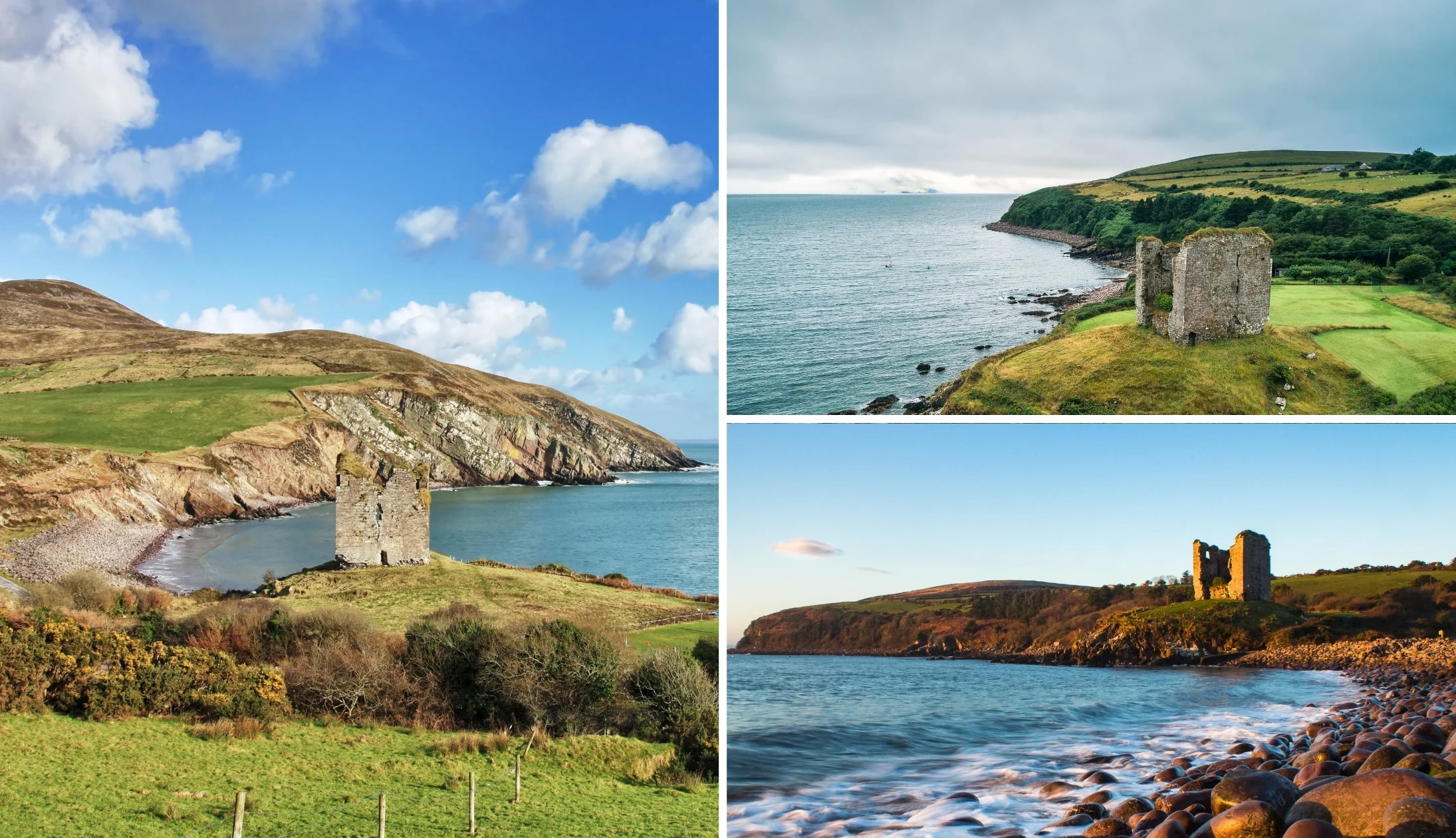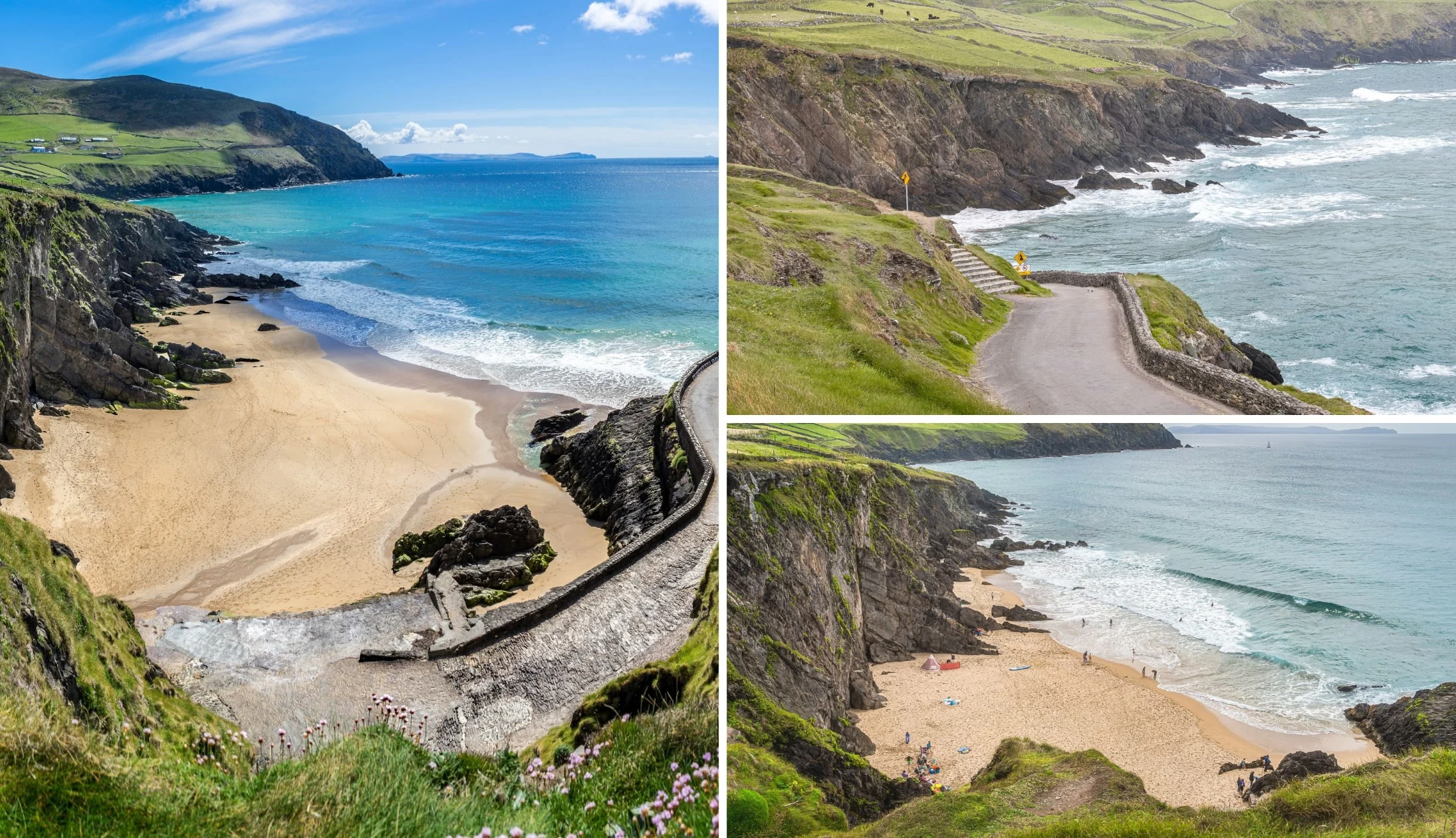I’ve spent more weekends on the Dingle Peninsula than I have in any other county in Ireland.
This gorgeous little corner of Kerry sits just above the Iveragh Peninsula and just below the bustling town of Tralee.
It’s home to countless attractions, like the Slea Head Drive, Conor Pass and the buzzy little Dingle Town.
Below, you’ll find a map of the area (with attractions) along everything you need-to-know if you’re debating a visit.
Some quick need-to-knows about the Dingle Peninsula

Photos via Shutterstock
The first section of this guide will get you up-to-speed very quickly about what you need-to-know about the Dingle Peninsula, so take 30 seconds to scan the points below:
1. Location
The breath-taking Dingle Peninsula is the northernmost peninsula in County Kerry and it attracts hundreds of thousands of visitors every year. It’s a 70-minute drive from Killarney and a 1-hour and 45-minute drive from Kenmare.
2. Getting there
The convenience of getting to the Dingle Peninsula will be entirely dependant on where you’re leaving from. Here are some options:
- Driving: The drive to the Dingle Peninsula is nice and easy to follow (see our guide to renting a car in Killarney if you need one)
- By train + bus: Tralee, Killarney and Farranfore as the closest train stations to Dingle. You can then get a bus to Dingle
- Tour from Killarney: This tour (affiliate link) takes you on a day trip to Dingle
3. It’s more than just Dingle Town
Many first time visitors fall into the trap of thinking that Dingle is just a town. While Dingle Town is worth seeing, there’s a whole lot more to the Dingle Peninsula that the town’s colourful (and busy) streets.
4. Key attractions
The most notable things to do in Dingle are Slea Head, Coumeenole Beach, Dun Chaoin Pier, Gallarus Oratory, Conor Pass, the Blasket Islands, the Dingle Way and Mount Brandon (more on these below).
5. Where to base yourself
If you’re looking to stay at the heart of the action, there’s plenty of hotels in Dingle and there’s some excellent B&Bs in Dingle, too. For a quiet alternative, the likes of Brandon and Ballyferriter are good options.
6. Home to two famous road trips
The Dingle Peninsula Drive and the Slea Head Drive are two popular road-trip-routes in the area. Slea Head is a section of the longer loop of the peninsula and it’s home to some of Kerry’s most memorable scenery.
About the Dingle Peninsula

Photos via Shutterstock
Finely plonked in the southwest of Ireland along the Wild Atlantic Way, the Dingle Peninsula is a glorious region that’s famous for its breathtaking landscapes and countless historical sites.
Shaped by the Atlantic Ocean’s relentless waves, the Dingle Peninsula’s landscapes are characterised by craggy cliffs, secluded coves, and beautiful vistas.
A historically significant peninsula
The Dingle Peninsula is a treasure trove of archaeological sites, with countless monuments, castles and nuggets of history dotted around the area.
These range from ancient stone forts, like Cahergall, to castles, like Minard.
Language and culture
The Dingle Peninsula is one of a number of Gaeltacht regions that exist in this part of Ireland. A Gaeltacht is an area where the Irish language is still spoken in everyday life.
The peninsula boasts a vibrant culture with a rich traditional music scene and a number of festivals, musical and otherwise, take place throughout the year.
A map of the Dingle Peninsula
The map above should give you a better sense of the lay-of-the-land on the Dingle Peninsula.
The blue markers show beaches, the orange show key attractions and the green ones show towns and villages.
If you’d prefer to plan you’re trip with an interactive Google map, we’ve created a map of Dingle with all of the various attractions plotted.
The most popular things to do in Dingle

Photos via Shutterstock
As we have a dedicated guide to the various things to do in Dingle, I’ll only touch on the ‘main’ attractions on the peninsula in this section.
Below, you’ll find the likes of Dun Chaoin Pier, the Slea Head Drive and Conor Pass (see here for a full list of Dingle’s attractions).
1. Inch Beach

Photos via Shutterstock
Inch Beach, as you’ll see from the photo on the left above, is nearly like a little peninsula in itself. One of the more popular beaches in Kerry, it stretches for an impressive 5.5km and it’s a lovely spot for a stroll.
There’s a small car park up front and, before you braze the chill Atlantic breeze, you can grab a coffee from Sammy’s (you can’t miss it).
As you ramble, you’ll see surfers attempting to conquer the waves whole the mountains of Kerry off in the distance seem to loom over you from every angle.
2. Minard Castle and beach

Photos via Shutterstock
Now, if you’ve ever watched the 1970’s film ‘Ryan’s Daughter’, you might recognise Minard Castle, which was referred to in the movie as ‘The Tower’.
The castle here is finely plonked on a little grassy hill that overlooks the water, commanding breath-taking views on a clear day.
Minard Castle dates to the 16th century and it is one of several ‘Fitzgerald castles’ that were built by the Knight of Kerry on the Dingle Peninsula.
3. Dingle Town

Photos via Shutterstock
Next up is the lively Dingle Town. It’s well worth parking up (you’ll find a car park at the pier), hopping out and heading for a stroll around this colourful little town.
It’s very walkable and, while very touristy, it boasts a fine bit of charm and character. In the town, you have attractions like the Dingle Distillery and the Dingle Aquarium.
There’s also plenty of great restaurants in Dingle (Fish Box is our go-to!) and there are endless old-school pubs in Dingle, too!
From the town, you can join one of the various Dingle Tours, like the Sea Safari or the boat trip to the Blasket Islands.
4. Coumeenoole Beach

Photos via Shutterstock
Next up is Coumeenoole Beach – another filming location for the movie ‘Ryan’s Daughter’, however, this one comes with a WARNING.
No matter how inviting the water looks here, never enter it – the bay here catches the full force of the Atlantic which creates strong and unpredictable currents.
There’s a little parking area next to the beach and you can either admire it from above or walk down the winding track to the sand.
Related read: Check out our guide to the Ring of Kerry Drive (with a handy Google Map)
5. Dun Chaoin Pier

Photos via Shutterstock
Dun Chaoin Pier is arguably the most notable of the many Dingle Peninsula attractions, thanks to its quirky appearance.
This is the departure point for the ferry to the Blasket Islands and it’s particularly impressive at sunrise and sunset.
Now, another warning – every year a tourist attempts to drive down the path here and gets stuck, destroying their car in the process.
There’s a bit of parking near the ticket office – never… ever attempt to drive down it!
Related read: Check out our guide to the difference between the Ring of Kerry vs Dingle Peninsula
6. Gallarus Oratory

Photos via Shutterstock
Gallarus Oratory is one of the final stops on the Dingle Peninsula Drive, and it’s a place that gets plenty of mixed reviews.
There’s a visitor centre (which you need to pay into) or, if you can find parking nearby, you can access it for free via a public path.
It’s believed that Gallarus Oratory was built around the 11th or 12th century. It’s a pokey little structure, standing at just 4.8m by 3m in size.
Related read: Visiting with kids? See our guide to the top things to do in Dingle for families
7. Conor Pass

Photos via Shutterstock
Next up is Conor Pass. Now, if you’re not doing the Mount Brandon hike, you can get to Conor Pass from Gallarus Oratory via Dingle Town.
At an impressive 410m above sea level, the mighty Conor Pass is one of Ireland’s highest mountain passes, and it can be the stuff of nightmares for nervous drivers.
However, you don’t have to drive it. If you head up to it from the Dingle side, you’ll reach a car park before you hit the narrow road.
From here, you can soak up views of the surrounding valley and watch the cars navigate its narrow bends from afar.
Where to stay on the Dingle Peninsula
The map of the Dingle Peninsula above shows the ‘main’ towns and villages around the peninsula.
Now, many visitors opt to stay in one of the many hotels in Dingle or in one of the B&Bs in Dingle.
However, this is far than a one-horse-peninsula. For a quieter experience, the hometown of Artic explore Tom Crean (Annascaul) is a must.
Ballyferriter and Brandon (Murphy’s Pub on the pier is hard to bate!) are two other great alternatives to the busy town.
FAQs about the Dingle Peninsula
We’ve had a lot of questions over the years asking about everything from ‘Is there a Ring of Dingle?’ to ‘How long do I need to see Dingle?’.
In the section below, we’ve popped in the most FAQs that we’ve received. If you have a question that we haven’t tackled, ask away in the comments section below.
Is the Dingle Peninsula worth it?
Yes, it most definitely is. Aside from the many charming towns and villages, the rich culture and the endless historical sites, the scenery on the Dingle Peninsula is simply out of this world.
How long does it take to visit Dingle Peninsula?
We would recommend allowing at least one day to see the Dingle Peninsula. Many people only allow 1/2 a day and, unfortunately, this only allows you to barely scratch the surface.
Why visit the Dingle Peninsula?
If you want to feast your eyes upon breath-taking vistas, sample excellent food, step-back-in-time at historical sites and drive one of Ireland’s top road-trip-routes, get yourself to the Dingle Peninsula.
Keith O’Hara has lived in Ireland for 35 years and has spent most of the last 10 creating what is now The Irish Road Trip guide. Over the years, the website has published thousands of meticulously researched Ireland travel guides, welcoming 30 million+ visitors along the way. In 2022, the Irish Road Trip team published the world’s largest collection of Irish Road Trip itineraries. Keith lives in Dublin with his dog Toby and finds writing in the 3rd person minus craic altogether.



